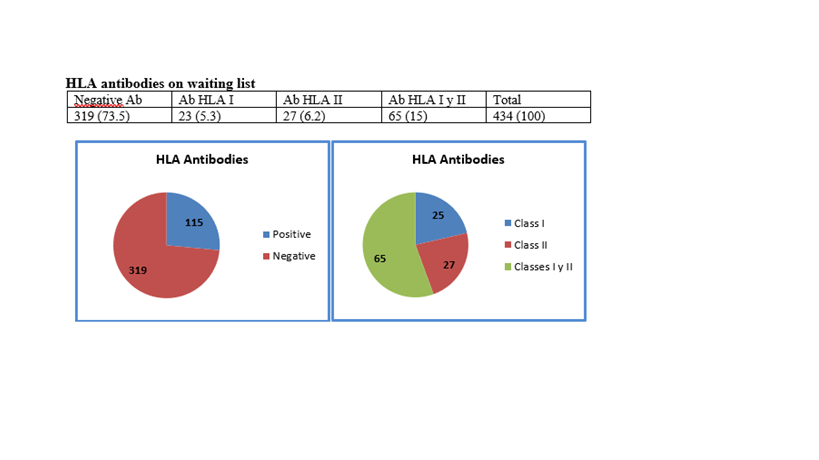Description of the process of inclusion and kidney transplantation waiting list - Uruguay
Sebastián Marton1, Adriana Tiscornia1, Mariana Lorenzo1, Milka Bengochea1, Adriana Cabrera1, Ely Silva1, Doris Abilleira1, Camila Gómez1.
1Laboratorio de Inmunogenética, INDT, Montevideo, Uruguay
Introduction: In Uruguay with 3,286,314 inhabitants (2011 census), renal transplantation is performed in 3 transplant centers, is regulated by the Instituto Nacional de Donación y Trasplante (INDT) and financed by the Fondo Nacional de Recursos. The allocation is made on a national algorithm and it is an INDT´s responsibity. In the last 5 years, including the Health Emergency, an average of 139 kidney transplants were performed per year. The average rate for these 5 years of renal transplantation is 42.33 pmp.
Objective: Describe the renal waiting list (WL) admission process and the recipient population.
Methods: The study algorithm for admission to the WL include:
During the period in WL the following procedures are performed:
Results: There are currently 434 patients in the WL, including one vascular emergency. Distribution - by age: 1.8% <18 years old, 85% 18-64 years old and 13.2%>65 years old; by sex: 43.8% female, 56.2% male. Blood group distribution: 54% are 0.35% A, 8% B and 2% AB. The highest immunological risk group: 18%, who aspire to be retransplanted, 1.4% hyperimmunized. There are 26.5% with positive HLA antibody screening, see table and distribution in graphs.

Conclusions: A single national protocol is applied at the inclusion on the WL. In the renal WL, the adult population (18 to 65 years old), blood group 0, with a male/female ratio of 1.3 prevails. The immune risk group does not present significant changes with respect to previous evaluations. The prevalence of sensitized to both classes and hyperimmunized is maintained.

right-click to download
